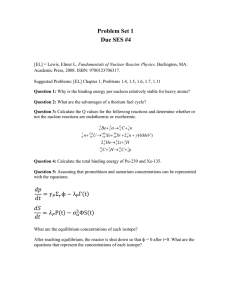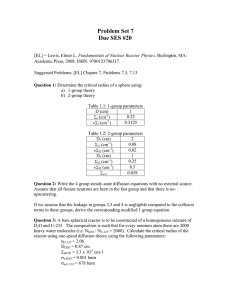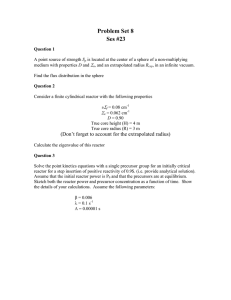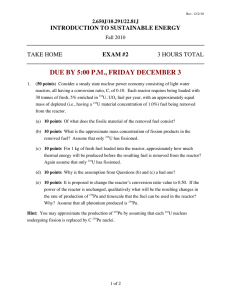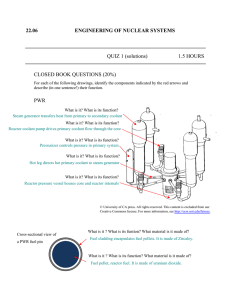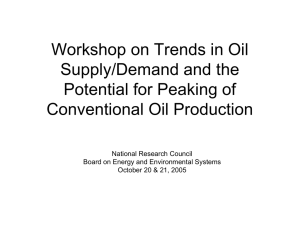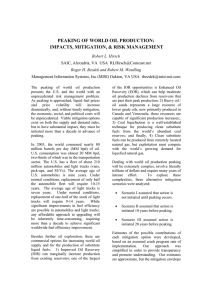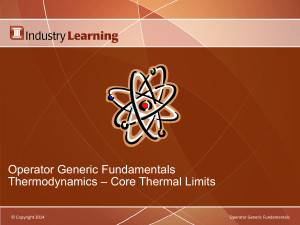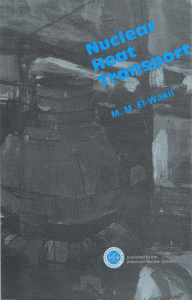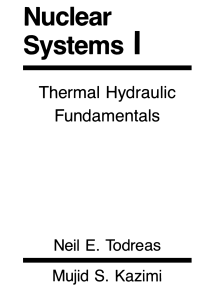Teaching Notes Operational Reactor Safety Course
advertisement
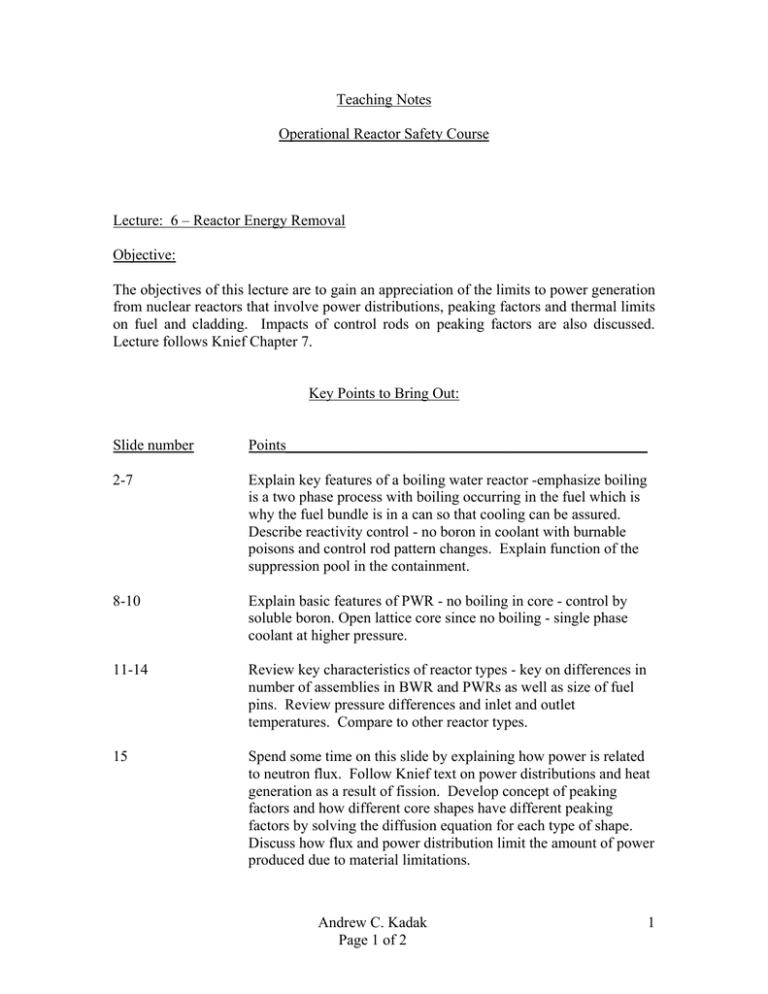
Teaching Notes Operational Reactor Safety Course Lecture: 6 – Reactor Energy Removal Objective: The objectives of this lecture are to gain an appreciation of the limits to power generation from nuclear reactors that involve power distributions, peaking factors and thermal limits on fuel and cladding. Impacts of control rods on peaking factors are also discussed. Lecture follows Knief Chapter 7. Key Points to Bring Out: Slide number Points________________________________________________ 2-7 Explain key features of a boiling water reactor -emphasize boiling is a two phase process with boiling occurring in the fuel which is why the fuel bundle is in a can so that cooling can be assured. Describe reactivity control - no boron in coolant with burnable poisons and control rod pattern changes. Explain function of the suppression pool in the containment. 8-10 Explain basic features of PWR - no boiling in core - control by soluble boron. Open lattice core since no boiling - single phase coolant at higher pressure. 11-14 Review key characteristics of reactor types - key on differences in number of assemblies in BWR and PWRs as well as size of fuel pins. Review pressure differences and inlet and outlet temperatures. Compare to other reactor types. 15 Spend some time on this slide by explaining how power is related to neutron flux. Follow Knief text on power distributions and heat generation as a result of fission. Develop concept of peaking factors and how different core shapes have different peaking factors by solving the diffusion equation for each type of shape. Discuss how flux and power distribution limit the amount of power produced due to material limitations. Andrew C. Kadak Page 1 of 2 1 16-19 Review flux shape effect with bare and unreflected core and resultant peaking factors. Point out the with zoned enrichment one can flatten the power distribution to reduce the peaking factors enhancing the power capability of the plant - this is what reactor physics designers do. 20-22 Develop heat transfer equations from the pellet - to clad to coolant using Kneif outline - but derive equations for better understanding. Make sure all terms for heat generation rates are understood - q''', q'', and q' and q. Use basic heat transfer laws - Fourier, Newton and Poisson to link with heat transfer courses. 23 Discuss nuclear limits in reactors and how they affect power capability. 24 Discuss departure from nucleate boiling and why it is so important to maintain a 1.3 margin. 25 Review heat removal using this graph which follows the axial temperature distribution up the fuel channel. Be sure students understand the differences in the curves. 26-27 Review impact of control rods on local power distributions and peaking factors. This is especially important in BWRs which are run rodded. Explain the importance of rod "bite" for reactor control. Andrew C. Kadak Page 2 of 2 2 MIT OpenCourseWare http://ocw.mit.edu 22.091 / 22.903 Nuclear Reactor Safety Spring 2008 For information about citing these materials or our Terms of Use, visit: http://ocw.mit.edu/terms.
